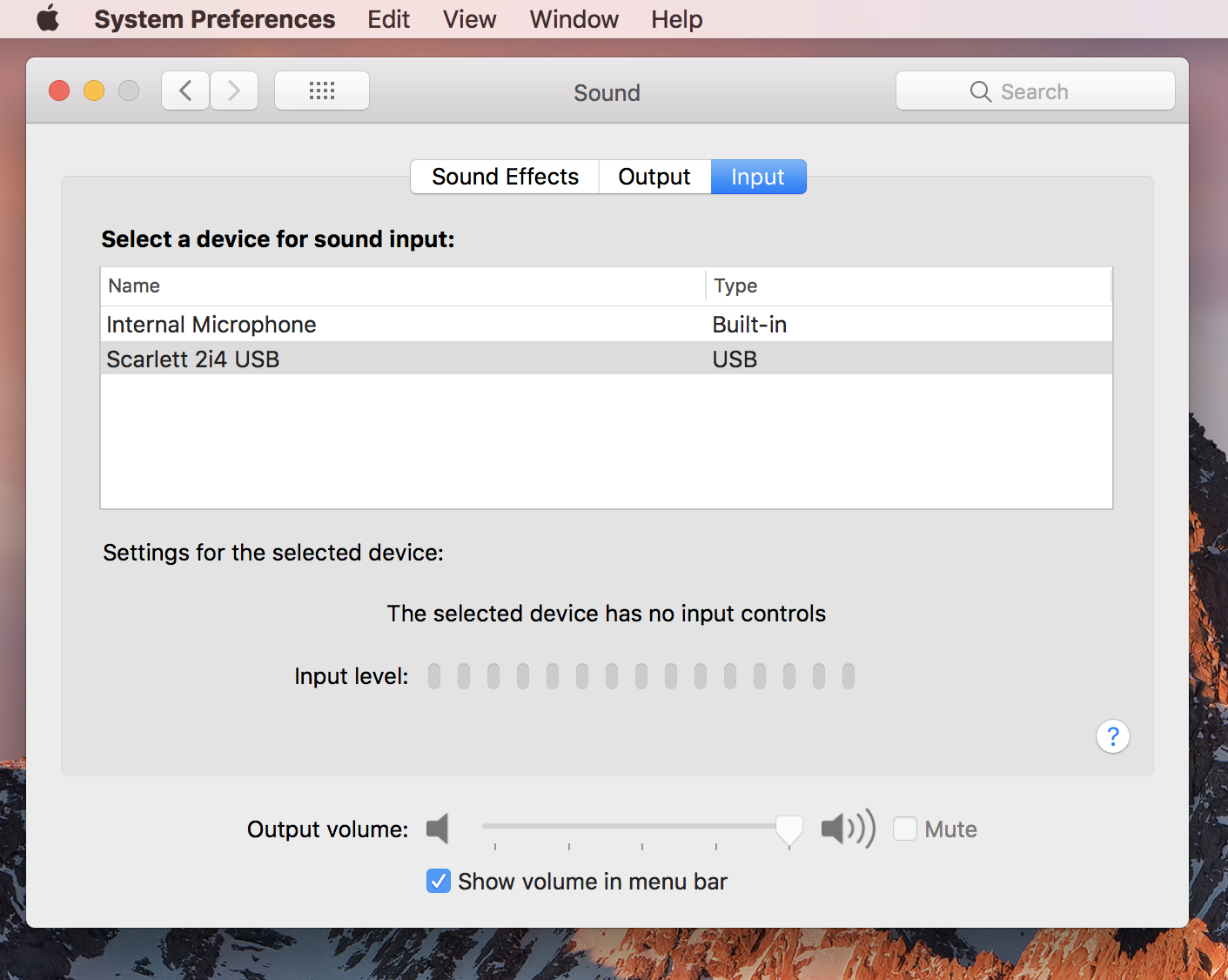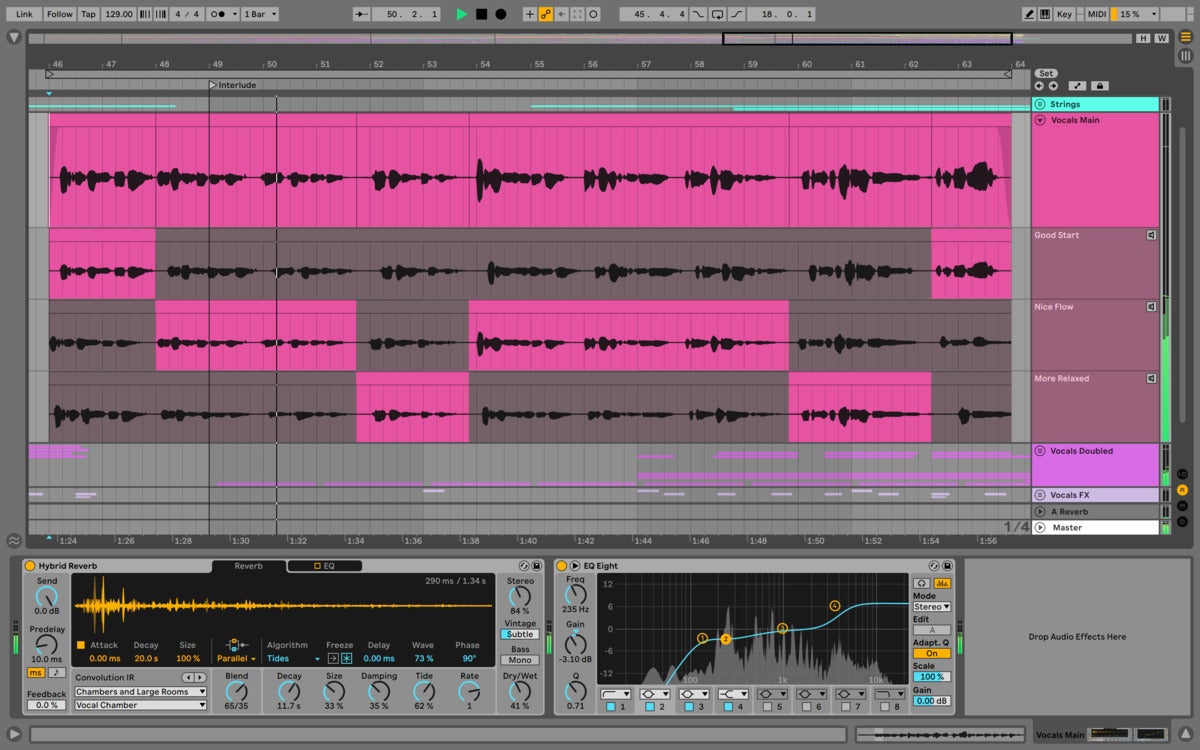Amrapali hd photo. FANTASTiC Dec 17 2016 | 1.59 GB
The Export dialog’s Rendered Track chooser offers several options for which audio signal to render: Master = the post-fader signal at Live’s Master output. If you are monitoring the Master output, you can be sure that the rendered file will contain exactly what you hear. One source of constant CPU drain is the process of moving data to and from the. When recording audio, this condition causes a gap in the recorded sample.
 DiscoTape delivers the classic vibe of pure disco but with the sonic clarity of cutting-edge production and recording standards; this is disco music for the modern dance floor. With infectious drum grooves, smooth bass lines, rich synth sounds and funky guitar rhythms, DiscoTape delivers nothing but good times. And while the music is 100% disco, and the sounds are perfect for the genre, the sound choices and production are right up-to-date.
DiscoTape delivers the classic vibe of pure disco but with the sonic clarity of cutting-edge production and recording standards; this is disco music for the modern dance floor. With infectious drum grooves, smooth bass lines, rich synth sounds and funky guitar rhythms, DiscoTape delivers nothing but good times. And while the music is 100% disco, and the sounds are perfect for the genre, the sound choices and production are right up-to-date.Ideal For A Discotheque Party Mood
DiscoTape contains 10 huge constructions kits all recorded at original dance-friendly tempos between 112 and 128 BPM. The library totals 3.2GB of sample data and contains over 600 loops and samples. Each kit includes 3 separate music parts with individual part lengths of up to 30+ seconds. Instruments include pianos, synths, electric guitars, electric bass, bass synths, Rhodes pianos and both electronic and acoustic drums. Within each musical part, individual loops are provided for each instrument allowing you to build your individual mix with precision within Elastik.
 Alongside the pre-mixed drum loops are individual drum loops for kick, snare, hi-hat, cymbals and various percussion instruments that include cowbell, congas, tambourine and shakers so you can also craft the perfect drum mix for your project. Single-shot samples are also provided for each drum and percussion sound if you want to add further rhythmic variations.
Alongside the pre-mixed drum loops are individual drum loops for kick, snare, hi-hat, cymbals and various percussion instruments that include cowbell, congas, tambourine and shakers so you can also craft the perfect drum mix for your project. Single-shot samples are also provided for each drum and percussion sound if you want to add further rhythmic variations.Perfect Blend Of Disco Vibe And Modern Production
Whether you are a songwriter, music producer, or looking for a funky, good-time disco mood for advertising, TV, film or live performance applications, DiscoTape is a perfect fit for those mirrorball moments.
Credits
Produced by J.Holo
Ableton This Sample Contains No Audio Data Mac Software
Genre: Disco
Elastik Soundbank for Mac & Win - AU/VST/AAX/RTAS/Standalone
3.2 GB, 10 Construction Kits, 601 Disco Loops & Samples

It’s no understatement that Ableton Live is an extremely powerful digital audio workstation fully capable both in the studio and on stage. However, when it comes to live performance especially, it’s not uncommon for users to find themselves pushing the limits of their system’s capabilities and maxing out valuable resources. In order to get the most out of our rigs, we need to address ways to optimize our components and settings to improve both stability and responsiveness.
1. Hardware Considerations
To start, I’ll dive into the more obvious hardware considerations. Number one… have the fastest computer with the most amount of RAM it can handle and you can afford. If your computer doesn’t have an SSD drive, get one as soon as possible as they’re worth their weight in platinum! This will greatly improve the loading times of applications, enhance overall system responsiveness and massively increase read speeds for such tasks as streaming audio from disc.
RAM (Random Access Memory) is just as important as your computer’s processor. The overall performance capabilities of your hardware come down to how well your CPU and RAM work together. If there’s not enough RAM to support running your software, the computer becomes sluggish. If the amount of available memory is exceeded, it’s likely to crash unexpectedly like a dating experience gone horrific.
For those of you running Mac computers that wish to monitor RAM usage, check the status by running the Activity Monitor located in your utilities folder. There’s also a super useful 3rd-party application, Memory Clean, that not only tells you how much RAM is being used, it’s also able to purge any inactive memory that’s still tied up.
2. Multicore Support
To help manage the CPU load, Live supports multicore and multiprocessor systems. In a nutshell, Multicore Support allows Live to distribute the processing load and application tasks amongst available resources.
Enable this option if your computer has multiple processors, as most do nowadays. Multicore support can be toggled off and on via the CPU tab in Live’s preferences.

3. Ins and Outs—Mono versus Stereo
Another significant source of strain stems from moving data to and from audio hardware. It’s not uncommon to encounter setups where the user has all available inputs and outputs enabled just in case they might need them. Such configurations are disadvantageous and only contribute to draining valuable system resources. Therefore it’s advisable to disable any unused audio inputs and outputs (Live’s preferences—Audio tab) as it will aid in decreasing your overall CPU load.
Another way to decrease the amount of audio channels playing simultaneously is to employ mono audio files where applicable instead of stereo interleaved counterparts. As a rule of thumb, I use mono files for any sonic content that doesn’t contain stereo information such as panning or spacial effects embedded in the audio itself. To create a wider image and sense of space, I recommend using mono files and sending them to return tracks containing time-based effects such as reverb or delay. Such workflow maximizes efficiency as you can send additional tracks to the same return effects and are able to share resources rather than redundantly create separate instances.
4. Sample Rate Differences
Sample rate settings for any given Live session significantly affect CPU usage. The higher the rate the more processing power is needed. It’s therefore recommended to use the lowest 44.1kHz setting for your performance session’s in/out sample rate unless there’s a valid reason to do otherwise.
Ableton This Sample Contains No Audio Data Mac Computer
A lesser know fact, sample rate conversion during playback and rendering in Live affects sound quality. Chances are that if you’re compiling audio files from various sources you run the risk of mixing and matching different sample rates within a single session.
Ableton This Sample Contains No Audio Data Mac Free
According to Ableton, “Playback of audio files at a sample rate that is different from the rate set in Live’s Preferences window will cause signal degradation. To minimize potential negative results during real-time playback, it is recommended to do sample rate conversion as an offline process, rather than mixing files of different sample rates within a single set. Once the samples have been exported at the sample rate that you plan to use in Live, the files can be imported without any loss of quality.”
Even though I occasionally work at higher sampling rates during my studio sessions, I’ll always convert to 44.1kHz for my performance setup. I do this via batch process offline through a 3rd-party converter which makes it fast and easy-peasy.
5. High-Quality Interpolation
Another benefit of using samples identical to Live’s session’s sample rate is that you can save additional CPU by turning off Live’s High-Quality mode. The HiQ feature improves sample rate conversion when matching an imported audio clip’s sampling rate to the system’s sampling rate or when transposing audio files but at the cost of higher CPU drain. If you’re converting your samples offline and not transposing the clip’s pitch during real-time playback, you can switch this off in one of two ways:
- Globally—High Quality Interpolation can be disabled via Live’s Audio preference tab - Default SR and Pitch Conversion - High Quality.
- Clip by clip—If you only have several clips that need dramatic transposition, you can activate High Quality mode for those instances by navigating to the Clip View - Sample Box - HiQ.
6. Clip RAM Mode
If you’re still having CPU performance issues try loading audio clips into your computer’s memory rather than streaming from disc. By clicking the RAM button located in the clip’s Sample Box, Live loads the audio to your computer’s memory. This is a decent workaround when attempting to play back too many samples simultaneously.
Be cautious when utilizing this method as you can easily overload your RAM. Live can handle disc overloads more elegantly. An overloaded disc mostly causes audio drops outs whereas overloaded RAM can result in audio arriving late, unwanted mutes and nasty “rhythmic hiccups”.
7. Disable Fades Option
While I’m addressing the Sample Box, another viable option is to disable the clip Fade-In/Fade Out button when not needed. This will also help conserve unnecessary processing. If you are, however, experiencing audible clicks and pops at the beginning and/or ends of audio samples, you can always turn the Fades option on for troublesome instances or manually create micro fades offline using a 3rd-party audio editor.
8. Collect All and Save
Ever get up on stage, look at your Live set and wonder why it’s telling you that a plethora of audio samples are missing? Where are they? Oh right, there’re back home scattered across multiple hard drives. This is where Collect All and Save comes in.
Not only is Collect All and Save a savvy quintessential function for gathering and organizing your assets into a nicely managed project folder, it’s also another way to conserve a bit of processing. When assets are strewn across multiple locations Live needs to keep track. If everything is nicely tucked into a single location, this equals less search time and increased power to allocate to more important tasks.
Bonus Tip: Deactivate Wi-Fi
This tip is probably the easiest to do and the hardest to remember. Especially when it comes to performing, turn off your computer’s Wi-Fi and disable any anti-virus software running. Additionally, close and quit any other applications not needed. You’d be amazed at just how many valuable resources these things take up. Once again consult your activity monitor and see if there’s anything running in the background that you might not be aware of and deactivate accordingly.
Less Processing Demands = More Responsiveness
Once you’ve optimized your settings and freed up that extra bit of power you can reallocate to tasks more important such as lowering your audio buffer. Reducing core audio buffer sizes results in less latency. Less latency equals a more tactile and responsive system devoid of sluggishness. All in all it comes down to a delicate balancing act between power and speed.
Note—For additional details regarding setting audio buffers and managing latency, check out this informative AskAudio article.
To learn more Ableton Live Tips & Tricks watch these video tutorials in The AskAudio Academy here.